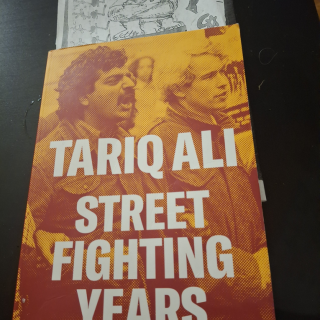Advertisement
For all her decades of experience in politics and the ways of Washington, D.C., nothing had prepared Lady Bird Johnson for the role of First Lady. She and her husband were elevated to their offices under the worst circumstances imaginable. On the airplane ride back from Dallas, she visited Jackie Kennedy who was in the hold of the plane with the casket. Lady Bird told her, "Oh, Mrs Kennedy, you know we never even wanted to be vice president and now, dear God, it's come to this." We. Mrs. Johnson seemingly sublimated her husband’s wishes to hers. But as Julia Sweig shows us, LBJ’s political career was her career too. Indeed, she sometimes referred to his office as “our presidency.” If Robert Kennedy, the attorney general, was the second most powerful person in Washington during his brother’s presidency, Lady Bird Johnson played that same role in her husband’s administration.
Reading Hiding in Plain Sight, I got the impression that Lady Bird, like Eleanor Roosevelt, who was sometimes referred to as “Eleanor Everywhere,” was everywhere and involved in everything. The Johnson daughters were still at home, and Lady Bird had to supervise the running of the White House. She had to look after President Johnson, whom for all his bluster, was often plagued with self-doubt in those early days. There was also the delicate matter of managing the Kennedy family, especially his widow, Jackie, and his brother, Robert. Finally there was the late president’s staff, some of whom could barely hide their disdain for the president, but whom LBJ convinced to stay on, at least for a time. Throughout everything, Lady Bird was in the thick of things. Along with her husband, she wrapped herself in the mantle of the Kennedy administration’s programs, and causes. It wasn’t until LBJ was decisively ensconced in a term of his own that the Johnsons felt they were out from under the shadow of the martyred president and beautiful first lady. Mrs. Johnson, smart, disciplined, and energetic, hit her stride.
Lady Bird Johnson is probably most famous for her interest and leadership in environmentalism, or what was then called beautification. That word annoyed her to no end. She said, “I’ll never forgive Lyndon’s boys for turning my environmental agenda into a beautification project,” she later recalled. “But I went ahead and talked about wild flowers so as not to scare anybody, because I knew if the people came to love wild flowers they’d have to eventually care about the land that grew ’em.”
Since Lady Bird often referred to her husband’s administration as “our presidency,” I was most anxious to learn what her role was in LBJ’s signature issue, civil rights. While she appeared to recognize the deep fissures that race visited on American society, she never seem to want to become involved in the race issue. Indeed, she held it at arm’s length. When Republican politicians had criticized her for the horrible conditions of tenants who lived on property she owned in Alabama–there was no electricity or running water–she recognized she could no longer remain silent on the subject. However, her first efforts in 1964 focused on the economic and social conditions of poor white Americans. It seemed her very southern background would not allow her to get involved in civil rights the way the President did. She thought that progress in civil rights would only come through legislation and court decisions. Throughout their entire presidency, she appears to have never developed an affinity for the cause of racial equality.
Lady Bird was active in other spheres, too. She had a keen interest in women’s rights, urban planning, and children’s health and well-being. She deftly managed the press on her own, and sometimes the president’s, behalf. And she purposefully developed a hierarchical way of being a mother and a wife: the President was first, her daughters were second, and she was third.
While reading Hiding in Plain Sight, I was struck with how politically astute she was, what a deft hand she had, and how she used that to advance her husband’s presidency and burnish his legacy, while at the same time securing her own. More than many women of her generation and socioeconomic station in life, she carved out a separate identify from her husband and daughters and led tremendous institutional and cultural change during one of the most difficult decades in American history. Claudia Alta Taylor Johnson, “the journalist, the historian, the strategist, the businesswoman, the political partner, the environmentalist, the wife, the parent and grandparent . . .” worked with well-defined purpose and without false modesty in her own low key way.
During what was probably the most tumultuous decade in the twentieth century, she was right there under our noses the whole time.
----------------------------
Dr. Marilyn K. Howard earned her PhD in American history from The Ohio State University (Dissertation: Black Lynching in the Promised Land: Mob Violence in Ohio 1876 - 1916). She is an associate professor in the Department of Humanities at Columbus State Community College. She has published essays in a number of anthologies, including the Encyclopedia of Racial Violence in America and the Encyclopedia of Jim Crow. She continues to conduct research on the lynching of black men by white mobs in Ohio.



